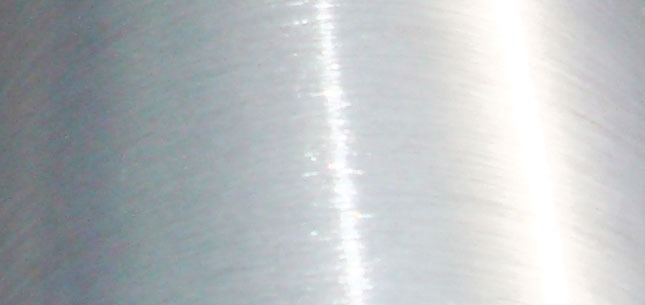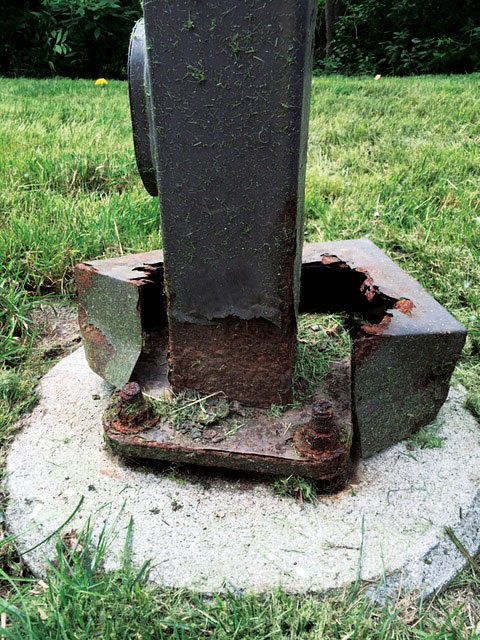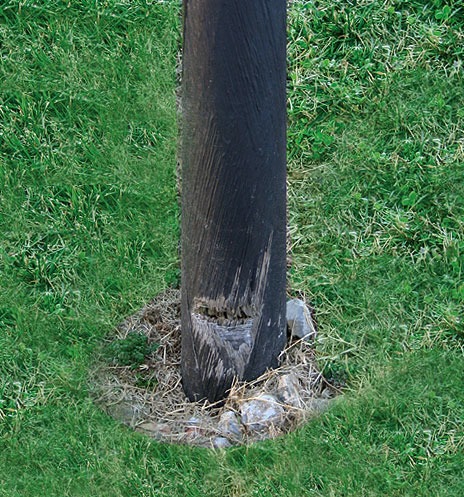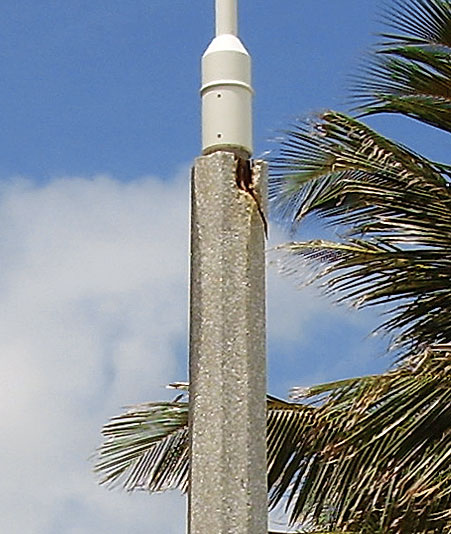Why Aluminum?
The superior properties of aluminum make it both the perfect choice and best value for outdoor lighting poles and brackets.
Corrosion Resistant

On contact with air, Hapco’s 6063 Alloy Aluminum forms a protective layer of aluminum oxide that guards against corrosion. This natural resistance to corrosion ensures that your aluminum lighting pole will resist the ravages of time, temperature and humidity while providing years of low maintenance care.
Nature’s Protective Coating… Aluminum Oxide
How It Works: The Science Behind the Strength
• Aluminum’s Reactive Nature: Raw aluminum reacts almost instantly with oxygen when exposed to air.
• Protective Layer Formation: This reaction forms a thin, tightly bonded layer of Aluminum Oxide (Al₂O₃) on the surface..
• Integrated Barrier: Unlike coatings or paints, the Aluminum Oxide layer becomes part of the metal itself—permanent and impenetrable.
• Extreme Hardness: Aluminum Oxide is exceptionally hard – rated 9 on the Mohs Hardness Scale (just below diamond).
• Self-Healing Protection: If scratched or abraded, the oxide layer reforms immediately, continuing to protect the metal underneath.
• Self-Healing Protection: If scratched or abraded, the oxide layer reforms immediately, continuing to protect the metal underneath.
• Corrosion Resistance: The layer prevents further oxidation and acts as a barrier to moisture, chemicals, and pollutants.
Lightweight

Aluminum provides the perfect combination of lightweight material with high strength-to-weight ratios. At one-third the weight of steel, aluminum poles are much easier to handle and install, providing substantial installation savings in both labor and equipment.
Proven Performance
Hapco has been manufacturing quality Aluminum Pole Products for more than 60 years, with many of the original installations still in service with no structural issues or noticeable differences in appearance. The longevity and durability of our products can be validated with our industry-leading Lifetime Warranty on aluminum pole assemblies.
The “Green” Choice

Aluminum provides an environmentally responsible choice of material and approach within the burgeoning green movement. Aluminum is the most abundant mineral in the earth’s crust, reduces material replacement energy by its incredibly long life cycle, and is 100% recyclable.
Lower Overall Cost of Ownership

The properties of aluminum make it a tremendous value when the overall cost of ownership is considered. Higher installation and maintenance costs for aluminum alternatives, combined with guaranteed replacement costs of shorter life cycle materials, contribute to aluminum having the lowest cost of ownership of any lighting pole option.

Disadvantages of Steel
- Steel is not corrosion resistant and will begin to deteriorate as soon as it is installed, allowing visible rust and corrosion which lead to higher maintenance costs.
- Inherently shorter life cycles contribute to an overall higher cost of ownership when compared to aluminum.
- Weighs three times as much as aluminum.
- Limited recycle value.
- Should not be Direct Buried.

Disadvantages of Composite
- Composite poles are affected by ultraviolet fading and fiber blooming.
- Can be damaged by mowing or trimming.
- No recycle value, making them difficult and expensive to dispose of in case of pole knockdowns.
- Expensive maintenance costs associated with repainting and replacement.
- Excessive deflection of the top of poles with many arm/luminaire combinations.
- Limited breakaway designs.

Disadvantages of Concrete
- Concrete is much heavier than Aluminum, resulting in significantly higher shipping and labor costs.
- Product Weight Comparison – 25’ Mounting Height:
Aluminum pole = 140 lbs
Concrete Pole = 1100 lbs - Slower, less efficient installations translate into extended job completion times.
- Difficult to install, requiring expensive installation equipment and larger installation crews.
- No breakaway performance, making concrete more hazardous in regards to highway safety than other pole materials.
- Susceptible to spalling (crumbling), staining and fading.
- No recycle value.


